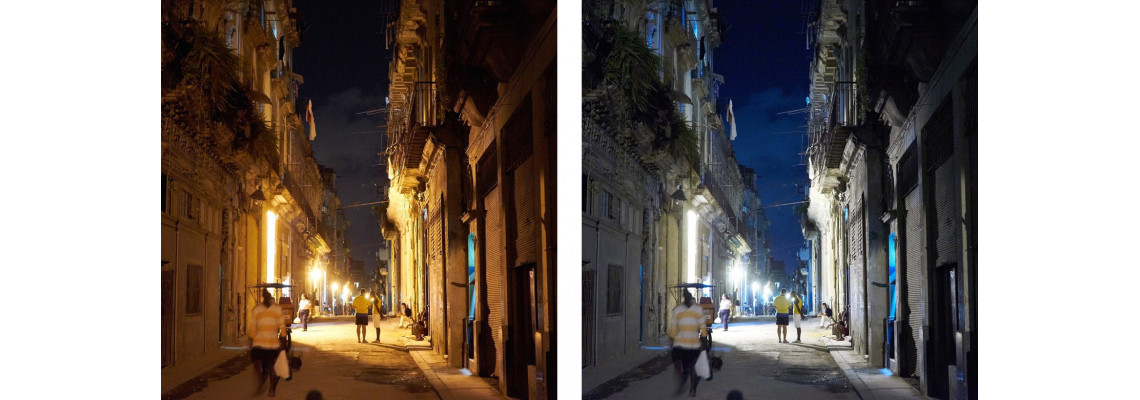Kas ir AWB funkcija - automātiska baltās krāsas balansēšana

White balance ir funkcija, ko bieži lieto videokamerās un digitālajās kamerās. Cilvēka acs var identificēt vienādu krāsu dažādos objektos dažādos apgaismojuma apstākļos; tomēr videokamera vai digitālā kamera nevar to pašu. Tās uztver krāsu atkarībā no ienākošā gaismas tonalitātes. White balance funkciju var izmantot, lai uzlabotu krāsu attēlojumu ierakstītajos attēlos.
Automātiskajā režīmā ierīce identificē spilgtāko punktu un izmanto to kā atsauci baltai krāsai. Balstoties uz to, tā var noteikt citu krāsu temperatūru attēlā. Krāsu temperatūra tiek mērīta Kelvina grādos. Krāsu temperatūru nosaka gaismas tips. Tas nozīmē, ka ar krāsu temperatūras palielināšanos gaisma šķiet aukstāka (no 5 500 līdz 10 000 K), bet ar krāsu temperatūras samazināšanos gaisma šķiet siltāka (no 3 000 līdz 5 000 K).
Gandrīz visām videonovērošanas kamerām ir funkcija AWB (Automatic White Balance tulk. no angļu val.) Automātisks baltās krāsas balanss- funkcija, lai pielāgotu krāsas dažādā temperatūrā esošajai gaismai. AWB izslēdz nereālas krāsas. Tā mērķis ir kompensēt valdošo krāsu, lai ģenerētu attēlus tādos, kādi tie izskatās cilvēka acij.
Vēl viena uzlabota funkcija ir ATW (Automātiskais Sekojošais Balta Balansa), kas ir paplašinājums AWB. Šī funkcija analizē visas attēla vietas, lai atrastu dažādas baltās vērtības. Atšķirībā no kamerām ar automātisko balto balansu, ATW kamerām ir iebūvēta balta balansa atsauce pareizai baltā attēlošanai pat vienmērīgi nokrāsotās ainavās.
Informatīvs piemērs tam kā izskatās baltās krāsas balansēšana ir redzams titulattēlā.

